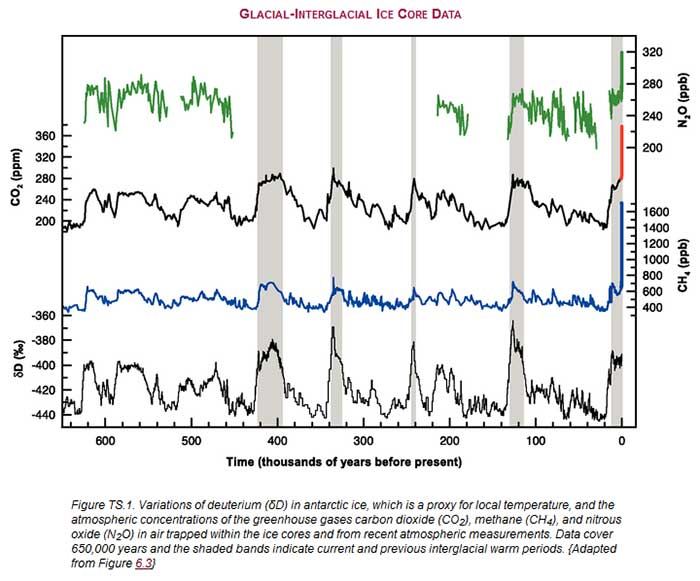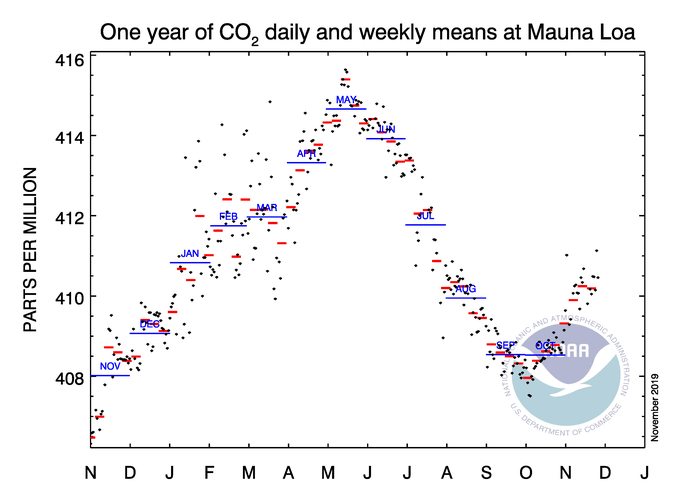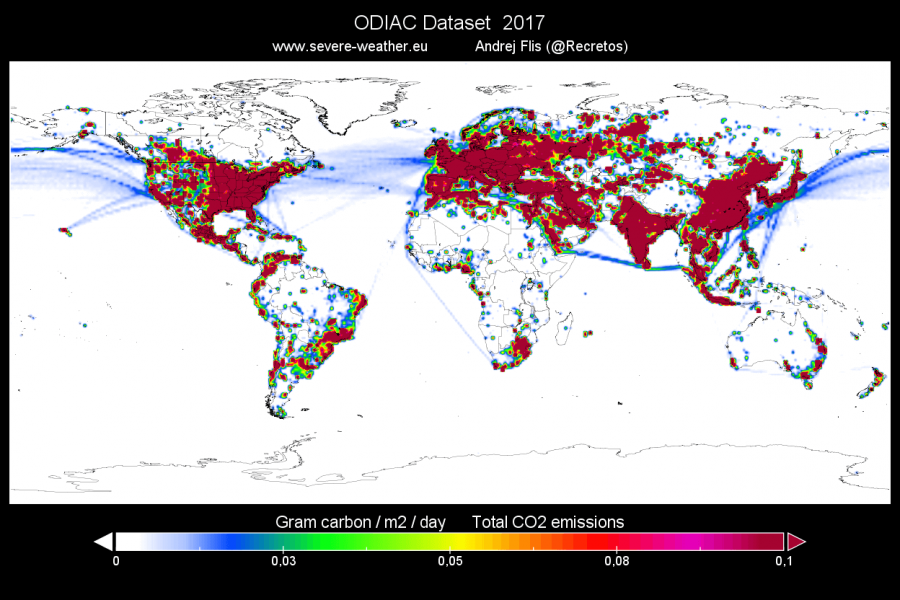The latest report from WMO on global CO2 concentration is in, and it is not good. Global carbon dioxide values have reached record high values yet another year, now being at highest levels in at least the past few million years!
Carbon dioxide (CO2) is a well-known greenhouse gas, along with Methane (CH4), also a very potent greenhouse gas. Greenhouse gasses trap the heat from the Sun in the Earths atmosphere, increasing global temperatures as the trapped heat builds. Scientists say that the last time the Earth experienced a comparable concentration of carbon dioxide was 3 to 5 million years ago based on ice core data. Back then, the temperature was 2-3C warmer and sea level was 10-20 meters higher than now.
The World Meteorological Organization released a new yearly report on Monday, stating that global values of carbon dioxide have reached a record high of 407.8 parts per million (ppm) in 2018. That means that per 1 million molecules of air, 407 of those were CO2 molecules. Previous record was in 2017 at 405.5 ppm. Graphics below from NOAA/ESRL shows the overall trend and global values for the past years/decades.
The WMO report also states that the increase from 2017 to 2018 is above the average yearly increase rate for the past decade. CO2 is measured globally at different stations and levels. Below is an example of the most used data points for CO2, especially Mauna Loa. The graph data ends at November 25th, so it is quite obvious that 2019 will also reach new record CO2 values with ease.
We can see that CO2 does not increase with each and every day, but we actually have a regular decrease every year. Below we have a graphic with weekly data for the past year, where we can see the yearly curve more closely. Why do the CO2 values drop every year? The reason is quite simple. In late spring and summer, land and ocean vegetation (plant life) is abundant, and consumes CO2 in the process of photosynthesis. In autumn and winter, the plants die off, and especially on land, the vegetation decays and releases some of the CO2 back into the atmosphere. Since most of the landmass and vegetation is in the Northern hemisphere, it has the strongest impact on the seasonal cycle.
The absorption of CO2 by land and oceans is a natural process, and can mitigate some of the CO2 increase. But the combined natural and human emissions of CO2 are too much for the lungs of the earth to process. The graphic shows yearly CO2 release and consumption of land and oceans. The net difference is the yearly increase of global CO2 levels.
Where are the main sources of CO2? We made 3 maps that show the human sources of CO2 from fossil fuel burning, food production and industry for 2017 (the latest data). As expected, we see the Eurasian sector and North America lighting up.
Transportation also leaves a signature, so when we also add the global transportation to the maps above, we can see the total global human emissions map.
Methane is also on a steady increase, reaching record values for at least a few decades to centuries.
What does this mean for our daily lives? Besides the usual effects of CO2 on rising global temperatures and climate (as emphasized by science), it might also hit our wallets more directly. Despite all the efforts and agreements in many climate panels and meetings so far, there is no noticeable slowdown of CO2 increase. This likely means that even more severe policies and legislation will be put in place to try and limit the global CO2 production and emissions. This has a direct impact on the global economy, which means that it has a direct impact on us, with new or higher taxes in different aspects of our life.
We will keep you updated on any important further development. While you wait for more updates, make sure to check out our latest winter forecast:
WINTER 2019/2020 FINAL MODEL FORECAST
Interested in our calendar? We are proud to present and promote the best weather photographers in Europe – see details:









